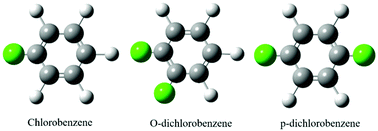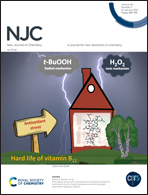Tracking the effect of chlorine as a substituent on vibrational coupling and energy transfer
Abstract
To understand the effect of the number and position of substituents on vibrational coupling and energy transfer in benzene derivatives, we have synthesized different chlorobenzenes and selectively excited them via femtosecond time frequency-resolved coherent anti-Stokes Raman scattering (CARS) spectroscopy. Dynamic processes were fully investigated based on the measured time-domain CARS spectra and the corresponding fast Fourier transform (FFT) spectra. Firstly, the effect of the number of substituents on vibrational coupling and energy transfer was analyzed. High-frequency C–H stretching modes at around 3000 cm−1 and low-frequency substituent-dependent modes at around 600 cm−1 were selectively excited. More beats were observed in chlorobenzene than in p-dichlorobenzene or o-dichlorobenzene. Energy transfer between the vibrational modes of chlorobenzene occurred more easily than between the vibrational modes of p-dichlorobenzene or o-dichlorobenzene. Secondly, we analyzed the effect of the substituent position on vibrational coupling and energy transfer in p-dichlorobenzene and o-dichlorobenzene. Vibrational modes at around 3000 and 600 cm−1 were selectively excited, respectively. More beats and more vibrational energy transfer were identified in o-dichlorobenzene than in p-dichlorobenzene. These experimental results indicate that vibrational coupling and energy transfer from parent to daughter modes were controlled by the number and position of substituents.



 Please wait while we load your content...
Please wait while we load your content...